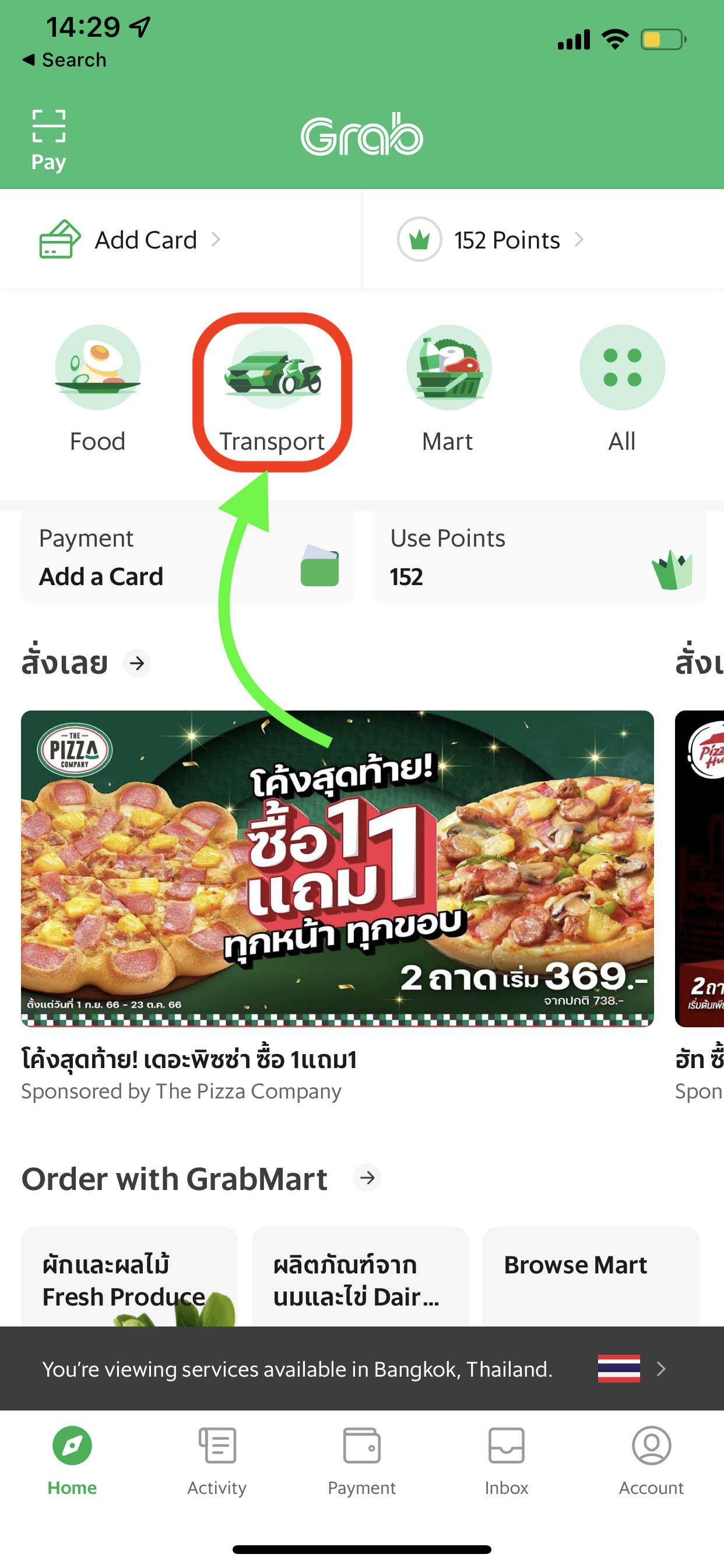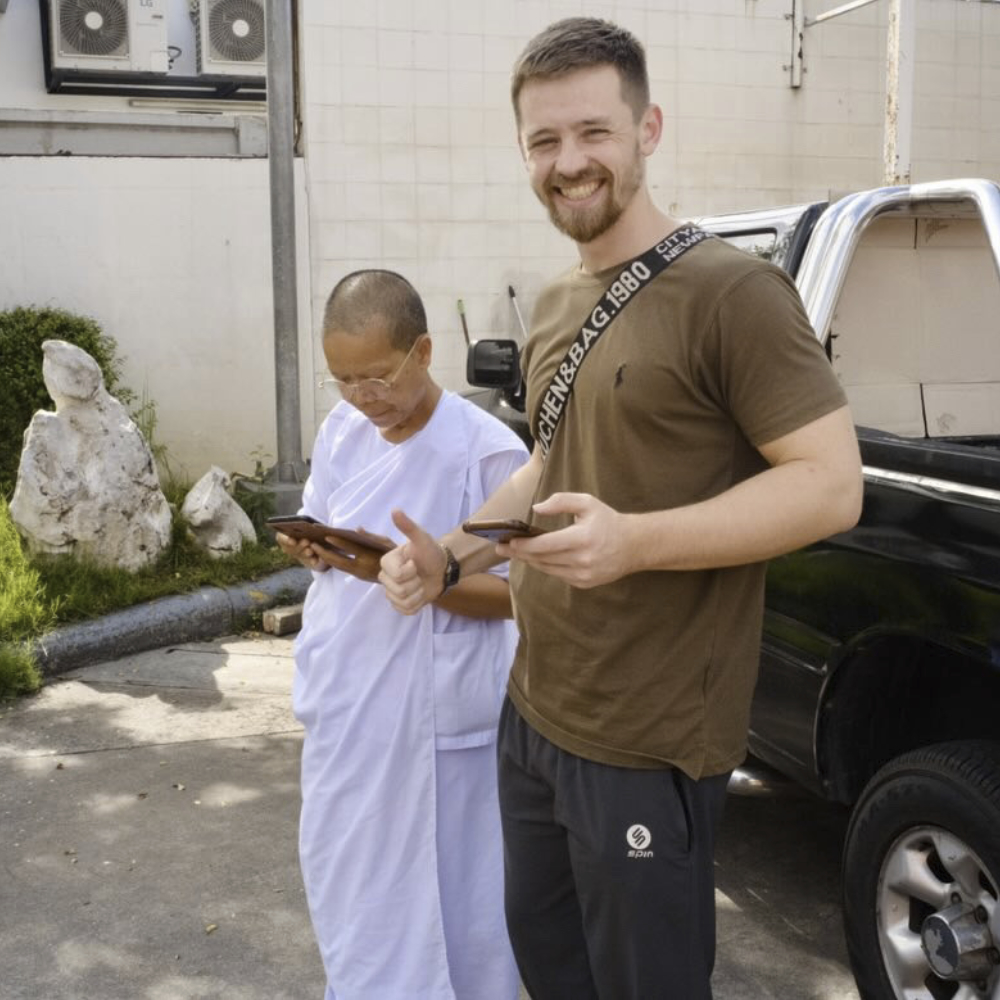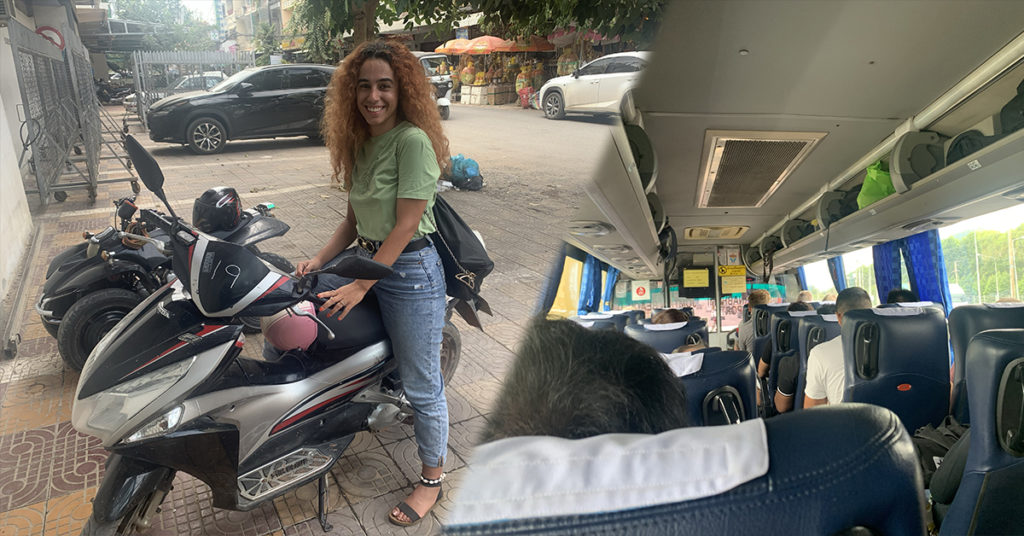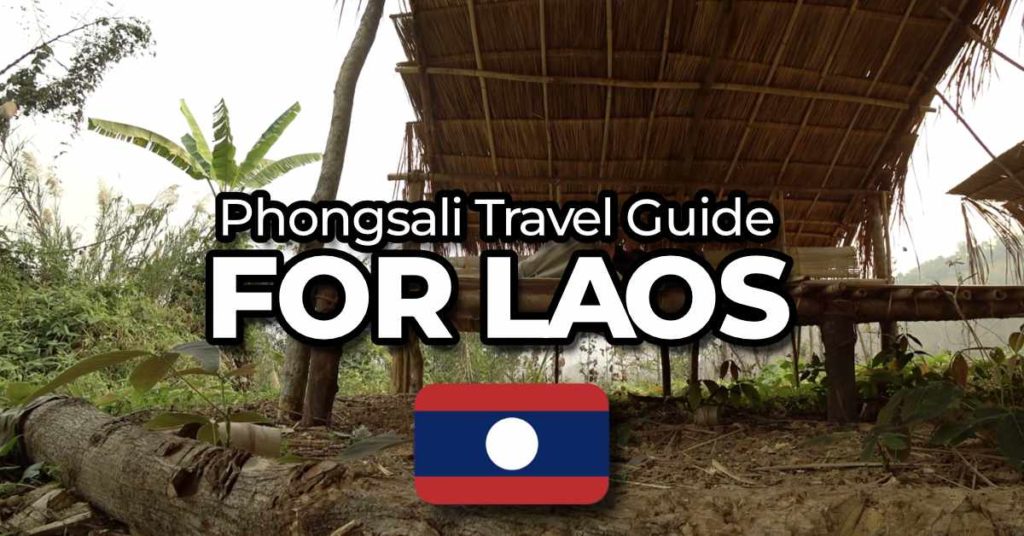So you’re in the Philippines and you’re wondering if Uber is available. The short answer is no. But fear not! In this article, we’ll share with you some great alternatives to Uber in the Philippines that you can use to get around affordably and easily during your stay.
All images in this article are original and taken by yours truly. If you nick them, I will know and I will DMCA report your site





Is Uber Available in the Philippines?
No, Uber is no longer available in the Philippines. The ride-hailing giant ceased its operations in the country in April 2018 after being acquired by its main competitor, Grab. However, this does not mean you’re out of options for getting around.
The Philippines has a thriving ecosystem of ride-hailing apps and traditional transportation methods that can cater to your needs. One great alternative is Grab, and another is Angkas (can’t get motorbike taxis on Grab so use this instead).
Uber Alternatives in the Philippines (Ride-Hailing Apps)
The best ride-hailing apps like Uber in the Philippines are:
- Grab – The most popular and widely available option, offering various services like car rides, food delivery, and more. Doesn’t offer motorbike taxi.
- Angkas – Great service, very available, focusses more on Trikes and motorbike Taxis (used this a lot in Manila traffic)
- Joyride – Good service that uses Taxis, Trikes and Motorbike Taxis (less likely to give you helmet like Angkas)
There are also many more apps, but realistically you don’t need more than Grab or Angkas to get around, both are very affordable. Joyride is a little more affordable than Grab, and this is the same with Angkas.
I used Angkas the most due to the Motorbike Taxi option. They also always give you a helmet when riding as it’s a policy of the company.
Here’s a quick comparison of these apps based on our experience:
| Feature | Grab | Angkas | JoyRide |
|---|---|---|---|
| Average Price (PHP) | ₱50-₱250 (varies with distance, time) | ₱50-₱200 (varies with distance, time) | ₱50-₱200 (varies with distance, time) |
| Average Price (USD) | $0.90 – $4.50 | $0.90 – $3.60 | $0.90 – $3.60 |
| Availability of Apps | Available on iOS and Android | Available on iOS and Android | Available on iOS and Android |
| Services Offered | Car rides (GrabCar) Motorcycle taxi (GrabBike) Food delivery (GrabFood) Parcel delivery (GrabExpress) Grocery delivery (GrabMart) In-city courier service Hotel bookings (GrabHotel) Subscription service (GrabUnlimited) | Motorcycle taxi Parcel delivery In-city courier service | Motorcycle taxi Parcel delivery Car rides (JoyRide Car) Food delivery (JoyRide Food) Pabili service (personal shopping) In-city courier service |
In this video below I use Grab and Angkas a lot to get between places around Manila and explore the history of the KKK in the Philippines (it’s not what you think).
Grab


Grab has established itself as a prominent ride-sharing platform in the Philippines, offering a wide range of services in major cities like Manila, Cebu, and Davao. One of the key reasons for Grab’s popularity is its affordability compared to traditional taxis. Additionally, Grab has implemented various safety measures, such as driver background checks and an in-app emergency button.
Grab is a little bit more on the expensive side compared to the others, but is the most reputable and the easiest to find a ride. My experience was that, Grab was extremely quick to get a ride and very useful. Drivers are safe, and the cars are always beautifully air conditioned.
For a 5km trip in Manila using a Grab car, expect to pay:
- During peak hours or heavy rain, it can range from ₱100 to ₱200 ($2 to $4)
- During regular hours, it can cost ₱60 to ₱120 ($1.20 to $2.40)
Angkas


Angkas, a motorcycle ride-sharing service, has gained significant traction in the Philippines, particularly in urban areas where traffic congestion is a major issue. Many commuters prefer Angkas for its ability to navigate through heavy traffic and reach their destinations faster. Angkas has implemented safety protocols, including mandatory helmet use and driver training programs.
Angkas is great! Used it a lot to get all over Manila, and it was very safe. They give you a helmet, and many drivers even carry hair nets so you don’t get other’s sweat all over your face from the helmet wearing. Really reliable, really fast to get a ride and pretty cheap. Also a rapid way to travel.
For a 5km trip in Manila using Angkas, expect to pay:
- During peak hours or heavy rain, it can range from ₱80 to ₱150 ($1.60 to $3)
- During regular hours, it can cost ₱50 to ₱100 ($1 to $2)
JoyRide
JoyRide is a relatively new player in the ride-sharing market in the Philippines. While it may not have the same level of market penetration as Grab or Angkas, JoyRide offers competitive pricing and a user-friendly app interface. JoyRide has implemented measures to ensure passenger safety, such as driver background checks and real-time ride tracking.
I’ll be honest, I didn’t personally use JoyRide however I know other travellers do and enjoy the experience. This is more of a backup to use if Angkas or Grab doesn’t work (in my humble opinion).
For a 5km trip in Manila using JoyRide, expect to pay:
- During peak hours or heavy rain, it can range from ₱120 to ₱200 ($2.40 to $4)
- During regular hours, it can cost ₱70 to ₱140 ($1.40 to $2.80)
It’s worth noting that pricing may vary depending on factors such as location, demand, and promotions offered by the respective ride-sharing platforms.
Are Ridesharing Apps Safe in the Philippines?
The roads in the Philippines are dangerous and accidents happen frequently. The traffic especially in Manila is also horrendous, so you might opt for using Trikes or Motorbike Taxis more often – this of course adds to the danger. However, what I did notice in the Philippines is that every Motorbike Taxi driver will provide you a helmet. This is not the case for Uber alternatives in Thailand for instance, and other SEA countries (such as Laos).
However, despite the safety concerns, many of the apps have great built-in features to ensure your safety, and drivers are thoroughly vetted in apps like Grab to ensure you’re not getting in the car with a weirdo.
Here are some of the safety features you can expect from apps like Grab, Angkas, and JoyRide:
- Driver background checks and verification processes
- In-app emergency buttons and panic alarms
- Ride tracking and sharing features
- Rating and review systems for drivers
Additionally, it’s always a good idea to follow basic safety precautions, such as sharing your ride details with a trusted contact, verifying the driver’s information before getting in the car, and avoiding riding alone late at night if possible.
Tipping Etiquette for Ridesharing in the Philippines
Tipping in the Philippines is not mandatory, but it is appreciated and considered a kind gesture, especially if you’ve received excellent service from your driver.
Here are some general guidelines for tipping when using ride-hailing apps:
- For short trips within the city, a tip of ₱10 – ₱20 ($0.20 – $0.40) is reasonable.
- For longer trips or airport transfers, you can consider tipping ₱50 – ₱100 ($1 – $2) or around 10% of the total fare.
- If your driver went above and beyond, such as helping with luggage or providing exceptional service, a larger tip of up to 20% of the fare is appreciated.
It’s worth noting that tipping is not expected, and you shouldn’t feel obligated to do so, especially if the service was subpar. However, if you do decide to tip, a simple “Thank you” or “Salamat bo (older women)/até (women similar age)/kuya (men)” will go a long way in showing your appreciation.
Traditional Transportation Options in the Philippines
While ride-hailing apps are convenient, the Philippines also has a rich tradition of local transportation options that are not only affordable but also offer a unique cultural experience. Here are some popular choices:
Jeepneys


Jeepneys are undoubtedly the most iconic form of transportation in the Philippines. These colorful, modified jeeps serve as share taxis, following fixed routes within cities and nearby towns. Riding a jeepney is an experience in itself, with their quirky decorations, blaring music, and tight seating arrangements.
Jeepney fares are incredibly affordable, typically ranging from ₱8 – ₱20 ($0.16 – $0.40) for short trips, depending on the distance. However, be prepared for a bumpy and crowded ride, as jeepneys often pack in as many passengers as possible.
Also they are incredibly fun to ride in and are steeped in a rich history. These buses are old modified Willys left behind by the Americans after the WW2 invasion of the Japanese and fights that happened here.
Many of the ones you see on the street today are locally manufactured and are not the original Jeeps, but they’ve kept they’re incredible Latin, American and Filipino charm.
When you’re on a Jeepney, you’ll have to trust people, as the way you pay is by passing your money to others, so they can pass it to the driver in the front, who will then pass you your change back. Don’t worry most Filipinos are extremely trustworthy and friendly towards tourists. I personally never had a problem with change or being overcharged in a Jeepney.
Tricycles


Tricycles, or “trikes,” are another ubiquitous mode of transportation in the Philippines, especially in smaller towns and residential areas. These motorcycle-powered sidecars can accommodate two to three passengers and are perfect for short, local trips.
Tricycle fares are negotiable, but you can generally expect to pay around ₱10 – ₱30 ($0.20 – $0.60) for short trips within a neighborhood or small town. While not the most comfortable option, tricycles are a convenient and affordable way to get around when ride-hailing apps are not readily available.
I would highly recommend getting a Trike, they are incredibly fun and an integral part of the Philippines travel experience, albeit a little dangerous.
Buses



For longer distances or intercity travel, buses and jeepney buses are a popular and cost-effective choice. These modes of transportation operate on fixed routes and schedules, making them a reliable option for those on a budget.
- For longer travel (intercity travel) expect to pay $5-$10 for a ticket, depending on where you’re going and the class of service (air-conditioned or non-air-conditioned).
- Jeepney buses, which are essentially oversized jeepneys with more seating, offer a more affordable alternative, with fares typically ranging from ₱20 – ₱100 ($0.40 – $2) for shorter trips.
- Local city buses are cheap too, but they generally take you to different districts in the city (I.E. Intramous to Bacoor). These cost around ₱30+ ($0.50-0.60).
The local buses that travel between different districts can get overcrowded and extremely packed. Additionally the seats are not made for anyone over 5ft7 or anyone who might be overweight, so beware, you will possibly be very cramped when you enter one.
Another cool part about these buses is that there are local vendors that hop on and sell snacks for your journey. I’m sure it’s annoying if you’ve lived there for a while, but for a travel experience to learn about the culture, it’s pretty cool to see.
Using Ridesharing Apps at Airports in the Philippines
One of the most convenient times to use a ride-hailing app is when arriving at or departing from an airport. Fortunately, most major airports in the Philippines allow pickups and drop-offs for services like Grab, Hirna, and Micab.
Ninoy Aquino International Airport (NAIA) in Manila
NAIA, the main gateway to the Philippines, has designated pick-up and drop-off areas for ride-hailing services, so you can get Grab or Angkas etc. Unfortunately this is still not the case in many places such as Thailand, but fear not, in the Philippines it’s possible!
Here are a few tips for using these apps at NAIA:
- Pick-up: After collecting your luggage, proceed to the respective pick-up areas for your terminal (Terminals 1, 2, 3, or 4). Follow the signs for “Transportation Network Vehicle Services” or “TNVS.”
- Drop-off: For drop-offs, your driver will likely need to use the departure level of the appropriate terminal. Be sure to have your bags ready for a quick exit.
- Surcharges: Some apps may apply a surcharge or airport fee for pickups and drop-offs at NAIA. Check the app for details before booking.
Do not get the “Metred taxis” outside the airport, they are rigged and set up to charge an extreme amount per KM. We fell for it due to the meter, but got out early as soon as we realised. Do not make the same mistake!
Other Major Airports
Most other major airports in the Philippines, such as Mactan-Cebu International Airport, Clark International Airport, and Iloilo International Airport, also have designated areas for ride-hailing services. However, the specific pick-up and drop-off locations may vary, so it’s always a good idea to check with your app or ask airport staff for guidance.
FAQ
Is Uber available in the Philippines?
No, Uber is no longer available in the Philippines. The company ceased operations in the country in 2018 after being acquired by its competitor, Grab.
What are the best alternatives to Uber in the Philippines?
The most popular and widely used ride-hailing apps in the Philippines are Grab, Angkas, and JoyRide. Grab is the most extensive and reliable option, while Angkas or JoyRide tend to be the most affordable.
Are ride-hailing apps safe to use in the Philippines?
Yes, reputable ride-hailing apps like Grab, Hirna, and Micab have implemented various safety measures, such as driver background checks, in-app emergency buttons, and ride tracking features. However, it’s still advisable to take basic precautions for your safety.
How much do rides typically cost in the Philippines?
The cost of rides can vary, but as a general guide, you can expect to pay around ₱100 – ₱200 ($2 – $4) for short trips within a city and ₱400 – ₱1,000 ($8 – $20) for longer, intercity trips using ride-hailing apps.
Can I use ride-hailing apps at airports in the Philippines?
Yes, most major airports in the Philippines, including Ninoy Aquino International Airport (NAIA) in Manila, have designated pick-up and drop-off areas for ride-hailing services such as Grab.

I’m Harry – and I was tired of the same old “10 best places I’ve never been but I’m writing about for some reason” blog posts. So… I’m a young traveller on a mission to travel the world and share my true, unfiltered experience, including all the gristly details. From packing my life into one bag for a year, to traveling Vietnam by motorbike, to sorting out Visas for specific countries – I’ve done it all, am doing it all and only give my advice on things I have done – not regurgitated cr*p from another source *cough* most publications *cough*. So bear with us! This project will take some time to grow, and will take a fair bit of money. But I’m determined to make it the single best source of information about traveling on the internet.


